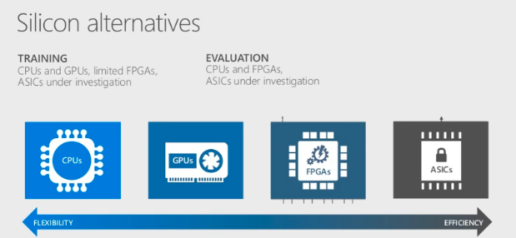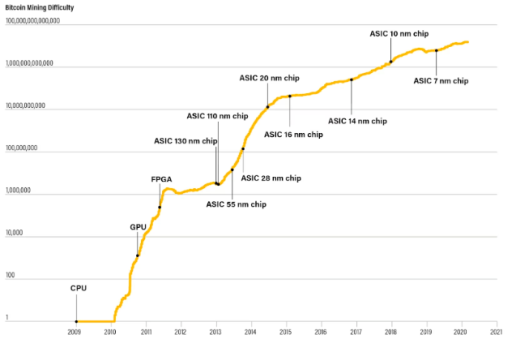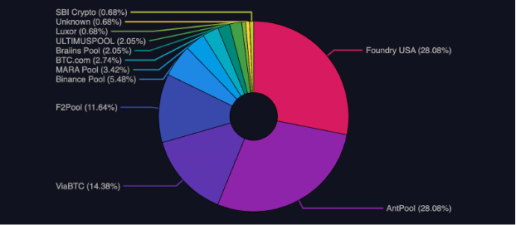On the 15th anniversary of the Bitcoin blockchain's genesis, it’s exciting to look back at the progress made in one key sector of the Bitcoin network: mining.
What was once an esoteric hobby for tech enthusiasts to mine bitcoin has flourished to become a global multi-billion dollar industry, advancing distributed technology, reshaping the energy industry and introducing a new form of financial sovereignty.
Bitcoin Mining
Bitcoin mining involves computation and a substantial amount of electricity for miners to validate transactions on the blockchain using the SHA-256 hashing algorithm. Bitcoin's hash rate measures the network's total computational power, indicating the processing capability dedicated to validating and adding new transactions to the blockchain.
By solving this hashing algorithm, a successful miner adds a new block to the blockchain and is rewarded with newly minted Bitcoin based on the current emission schedule. This mining effort, called Proof-of-Work (PoW) encompasses the resources and energy needed to fortify the Bitcoin network.
A brief history of Bitcoin mining
The birth of Bitcoin mining dates back to January 3, 2009, when the first-ever block, known as the genesis block, was added to the Bitcoin blockchain. Early Bitcoin enthusiasts were using typical computer processors (CPUs) to mine at home since mining was designed to be accessible to anyone with a computer, allowing Bitcoin to be truly decentralized.
However, as the community of Bitcoin miners grew, the ability to mine became more challenging due to a "difficulty adjustment" mechanism built into the network. The Bitcoin mining difficulty adjustment mechanism enhances the network's security, regulates ~10-minute block times, and adapts to technological advancements in mining hardware. Another mechanism, the Bitcoin halving, controls the emission of new Bitcoin, ensuring that no more than 21 million coins will ever be in circulation.
Bitcoin Halving
The first Bitcoin halving in November 2012 reduced the reward from 50 BTC to 25 BTC per block. This was followed by subsequent halvings in July 2016 and May 2020, bringing the reward down to 12.5 BTC and then to 6.25 BTC, respectively. The upcoming fourth halving, expected in April 2024, will further reduce the reward to 3.125 BTC.
The halving events are crucial for miners and the entire Bitcoin ecosystem, playing a significant role in controlling Bitcoin’s supply. These events heavily influence mining operators’ profitability, prompting hardware adjustments or upgrades and adding pressure to developing more powerful and energy-efficient mining equipment.
Technological advancements in mining
The hashing algorithm in Bitcoin mining hasn’t changed since its inception. However, the hardware used has been changing rapidly since. What originally started as common household and inexpensive CPUs evolved into specialized equipment to maximize efficiency and output.
By 2010, the shift to Graphics Processing Units (GPUs) took place, enhancing mining efficiency and offering versatility to mine various cryptocurrencies. As the quest for optimization surged, 2011 witnessed the emergence of Field Programmable Gate Arrays (FPGAs), specifically engineered for superior mining performance, albeit demanding more technical prowess. In 2013, the advent of Application Specific Integrated Circuits (ASICs) massively increased hashing power. ASICs are specifically designed for mining Bitcoin, optimizing for maximum output and efficiency. This equipment helped pave the way for mining, making CPUs virtually obsolete for mining Bitcoin.

Source: Microsoft
Illustrated by the graphic below, ASIC miners have rapidly evolved over the years as the development of energy-efficient mining hardware aims to address the vast power consumption and its environmental impact. These advancements have caused a gradual increase in mining difficulty due to greater hashing power.

Source: Coindesk
In addition to energy-efficient hardware improvements, mining operators are shifting towards green mining practices using renewable energy sources such as solar, wind, and hydropower.
The industry has also introduced innovative cooling systems like liquid cooling, heat sinks and fans to ensure efficient heat dissipation, improving performance and stability over long durations.
Competitive landscape
With the rise of technological advances in mining equipment, the urgency to leverage the newest and most efficient ASIC equipment to maximize rewards and profitability inadvertently applies competitive pressures on smaller mining operators. As a result, Foundry and AntPool are the two largest mining pools, producing over 51% of Bitcoin blocks, which has led to some concerns about the centralization of Bitcoin mining.

Source: Mempool.space
Although the first Bitcoin mining pools predated the emergence of ASIC mining, mining pools were a solution for individual miners facing low odds of successfully mining a block independently. These pools combine miners’ computational resources to increase their chances of mining blocks on the network. The rewards are distributed proportionally among the participants to their contributed hash rate.
Mining pools benefit from more predictable block subsidies or revenue, helping them cover operational costs and maintain profitability. The pool coordinator manages the distribution of rewards and takes a small fee for their services. This setup makes mining more accessible and viable for small-scale miners, ensuring their ability to participate and compete in the Bitcoin network.
The emergence of cloud mining improves inclusivity by offering miners the ability to rent mining hardware and processing power from cloud data centers, improving accessibility to beginners and small-scale miners without the need for expensive infrastructure.
The Future of Bitcoin Mining
Experts are optimistic about the potential of cloud mining to welcome newcomers and enthusiasts into the world of mining by democratizing access to costly hardware. Concurrently, there is a meaningful shift towards green mining practices as the industry acknowledges and addresses the environmental impact of extensive energy consumption. Not only is the mining industry adopting renewable energy sources for mining activities, but it is also reimagining the energy industry by reinforcing energy infrastructure.
The continuous advancement of semiconductor technology promises the introduction of even more efficient ASIC chips, like the upcoming 3nM chip from Samsung. Integrating Artificial Intelligence (AI) into mining hardware is also being explored, with the potential to optimize mining, boost productivity, and improve power efficiency.
However, challenges such as difficulty adjustments and the risk of centralization loom as we approach the 2024 Bitcoin halving, necessitating strategic solutions to ensure network security and decentralization. A decentralized mining pool’s Stratum V2 update are stepping stones towards a more censorship resistant, decentralized and secure mining pool ecosystem, giving miners greater control.
Closing Summary
As Bitcoin mining continues evolving, the industry embraces innovative solutions to improve efficiency and sustainability. Since its launch in 2009, Bitcoin mining has undergone a significant transformation, from CPU mining to the introduction of energy-efficient ASIC hardware. This evolution demonstrates the flourishing state of mining and sets the stage for future advancements.
As we look forward, Bitcoin mining stands as a testament to the resilience and innovative spirit of the crypto community, continually adapting to changing landscapes while contributing to the network’s strength and functionality. The journey of Bitcoin mining reflects the cryptocurrency’s potential not just as a digital asset but as a catalyst for technological and energy advancements, reinforcing its relevance and promise for the years to come.

